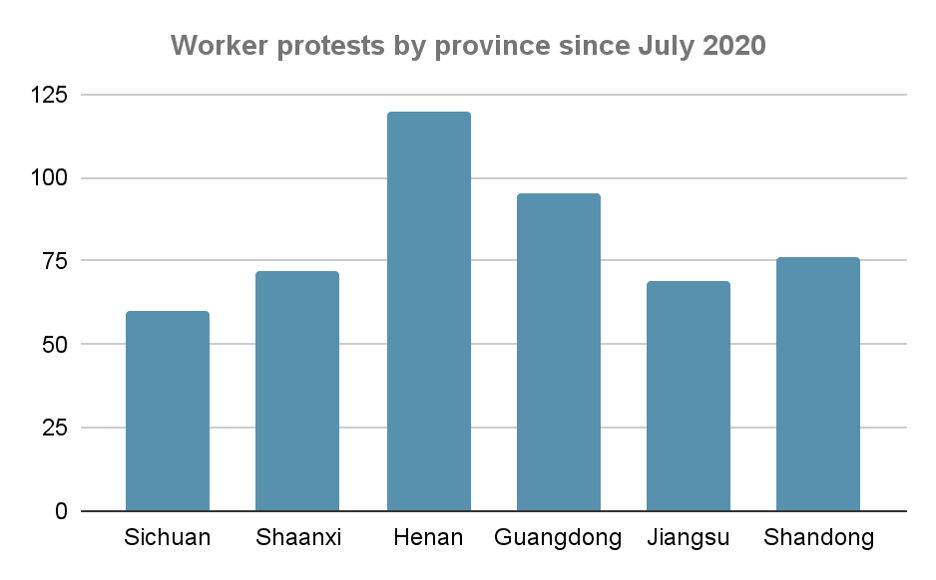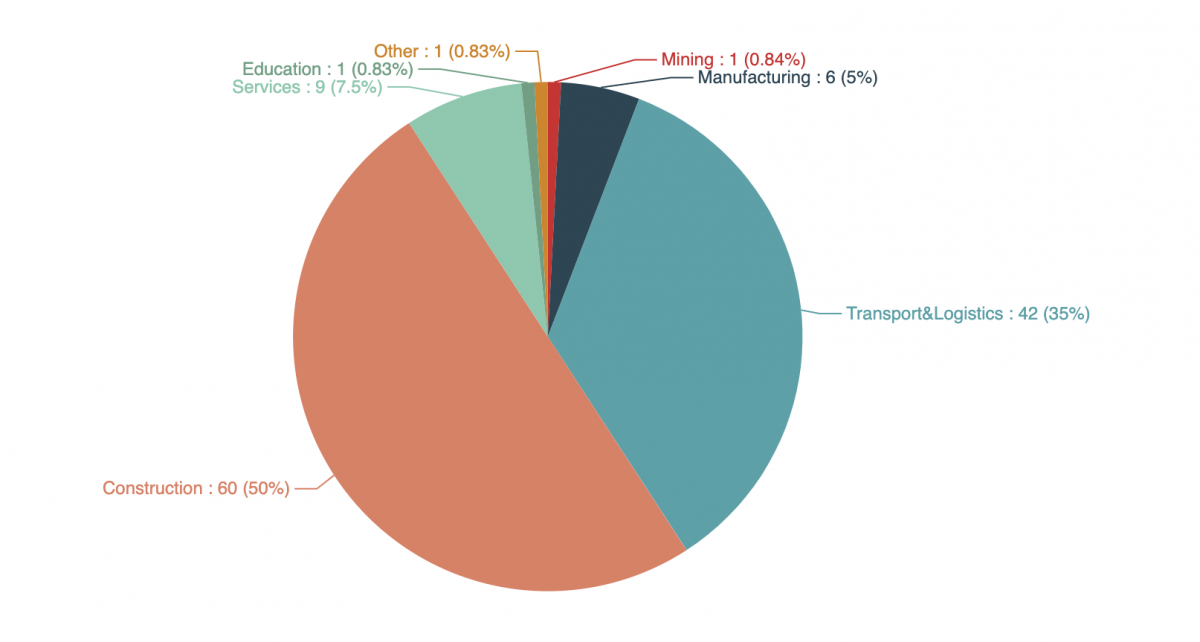Henan overtakes Guangdong in number of worker protests
24 August 2021The central province of Henan has been a key locus of worker activism and collective protests in China over the last year, with construction and transport workers taking the lead.
Of the 1,082 incidents recorded on China Labour Bulletin’s Strike Map since 1 July, 2020, 120 (11 percent) occurred in Henan. The next highest total was Guangdong with 95 (8.6 percent).
For much of the last decade, the economic powerhouse of Guangdong had by far the largest share of worker protests in China. However, as manufacturing production relocated, and inland provinces saw greater economic development, worker protests became much more evenly distributed across the country.

Today, the inland provinces of Sichuan and Shaanxi also have a high proportion of worker protests, but Henan is solidly in the lead. This can partly be explained by Henan having the third highest population in China after Guangdong and Shandong, but there are other factors at play.
The most important demographic shift was the massive jump in the province’s “floating population” (流动人口), predominantly rural migrant workers living and working away from their hometowns. According to the latest national census, Henan had a floating population of 21.2 million in 2020, which represented an increase of 164 percent over 2010. The vast majority (19.9 million) were migrants from within the province, rural Henan residents moving from their hometowns to nearby cities for work.
Rural migrant workers tend to be employed in low-wage, hazardous and precarious jobs such as the construction industry, services, transport and logistics. And the distribution of worker protests in Henan since July 2020 shows that exactly 50 percent of the recorded incidents were in construction, 35 percent were in transport and logistics, and 7.5 percent in services.

Henan has a slightly higher proportion of construction worker protests than the national average (45.4 percent), indicative of the large number of infrastructure, residential and commercial property construction projects dotted across the province, usually in smaller cities where regulation is laxer.
In all 60 cases recorded on the Strike Map, construction workers in Henan protested the non-payment of wages by contractors. As we discuss in CLB’s detailed report on the construction industry, fundamental flaws in the contracting system mean that wage arrears are endemic in the industry, and, more often than not, local governments are unable to resolve these labour disputes because of the numerous layers of sub-contracting involved.
The large number of transport worker protests in Henan is partly the result of actions by taxi drivers protesting the imposition of fees and competition from unregistered cabs, and demanding the right to operate their own vehicles independently from the cab companies that dominate the industry.
There have also been regular protests by delivery workers, usually in response to wage arrears or arbitrary changes in payment rates imposed by the delivery companies.
In the service sector, there were protests by hotel and retail workers, sanitation workers, and employees in media organizations. In addition, many teachers, who have been laid off or are owed wages in arrears, have taken to social media to air their grievances.
There were relatively few protests by workers in the manufacturing sector, which, according to Henan government statistics, contracted in value by 0.3 percent in 2020. The industries most affected by the economic slowdown were the automotive sector (particularly electric vehicles), food processing and garment manufacturing. Production of surgical masks, on the other hand, increased by 621 percent in terms of output value.
Most of the factory worker protests that were recorded in Henan over the last year were related to wage arrears in the garment and automotive sectors.
The best-known manufacturing plant in Henan, the massive Foxconn facility in Zhengzhou, has seen occasional worker protests over the last five years related to the use of agency labour. However, the biggest disruption recently was caused by this year’s devastating flooding in Henan, which inundated the factory complexes, trapping thousands of workers. Production has partially resumed, but many product lines will face serious delays.
CLB has not seen any reports of Foxconn workers going without pay as a result of the flooding, but many other workers have lost their jobs or have not been paid because of the disaster’s large-scale disruption to production.
